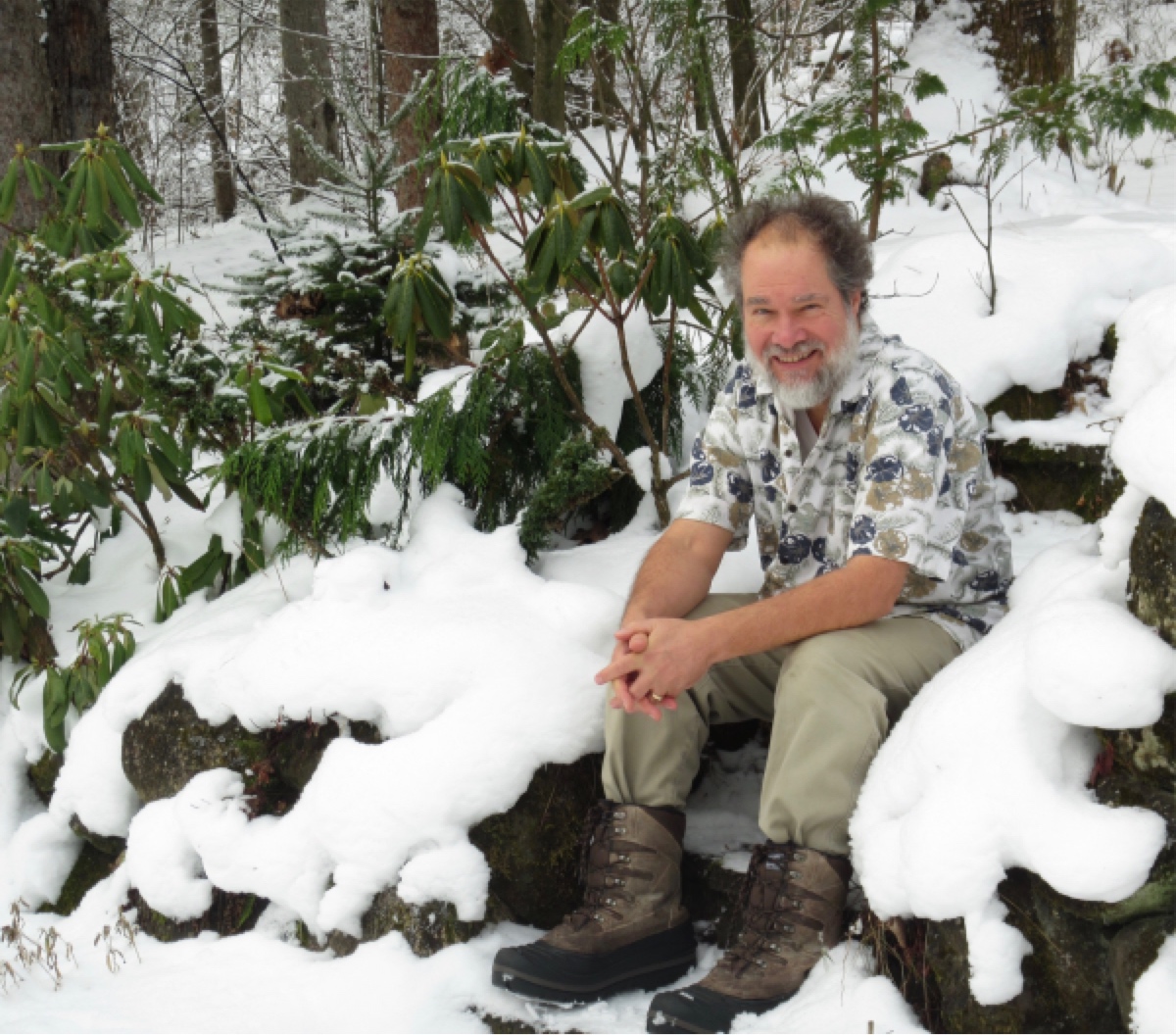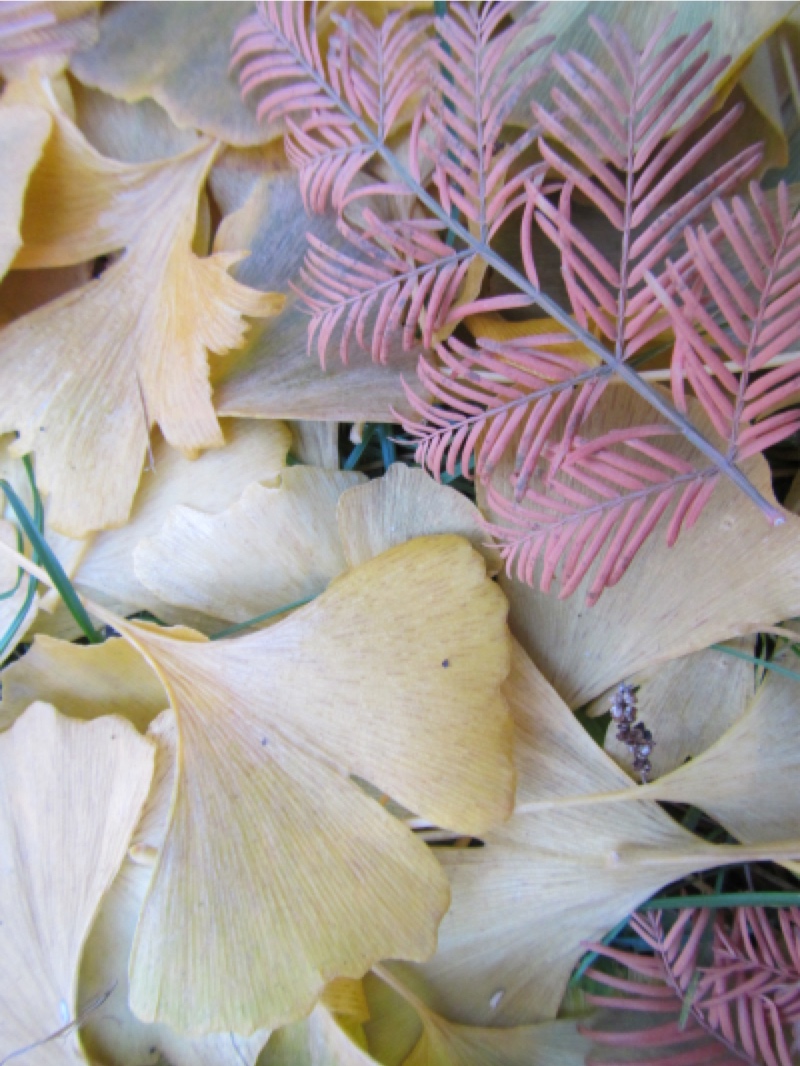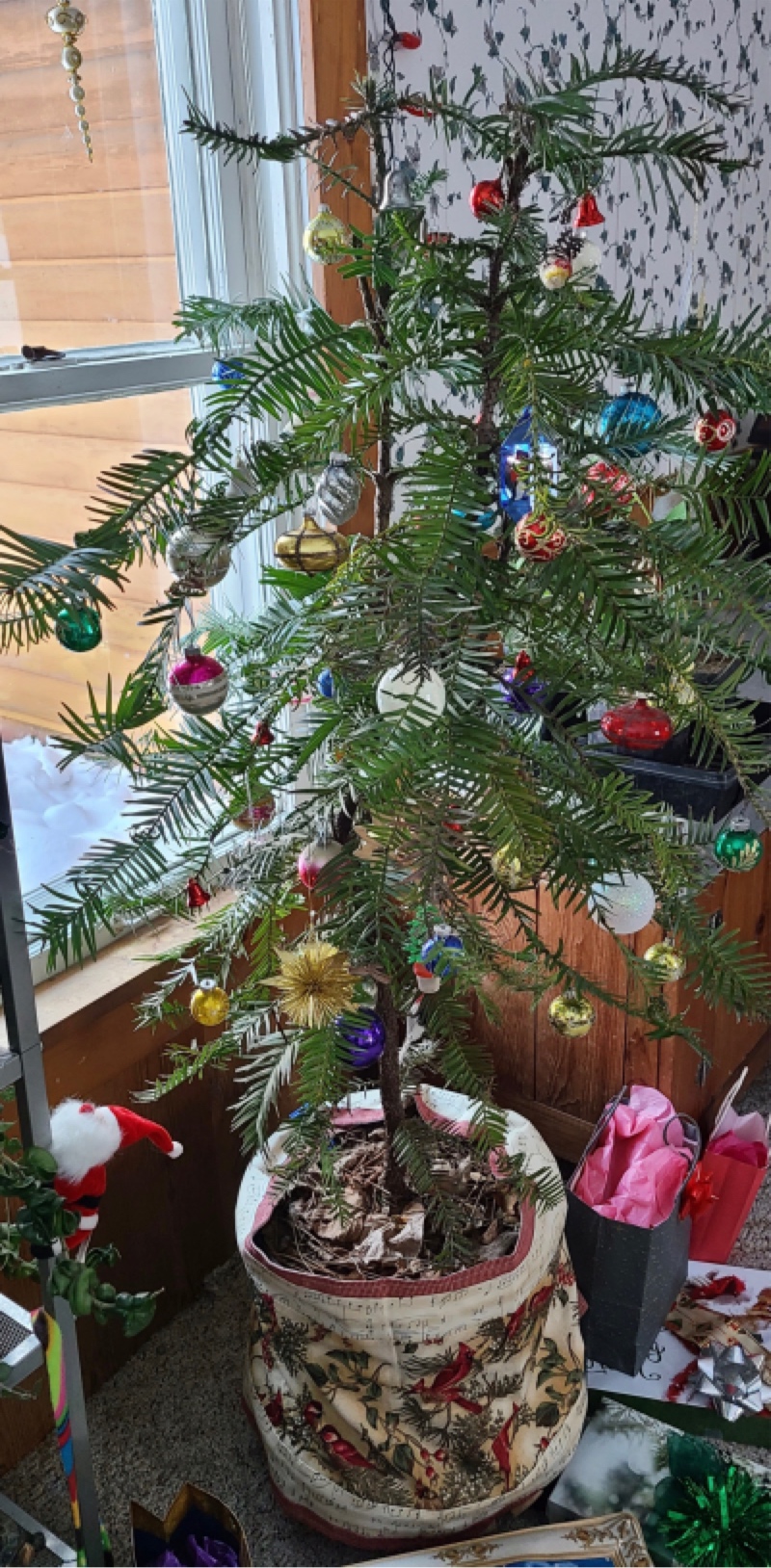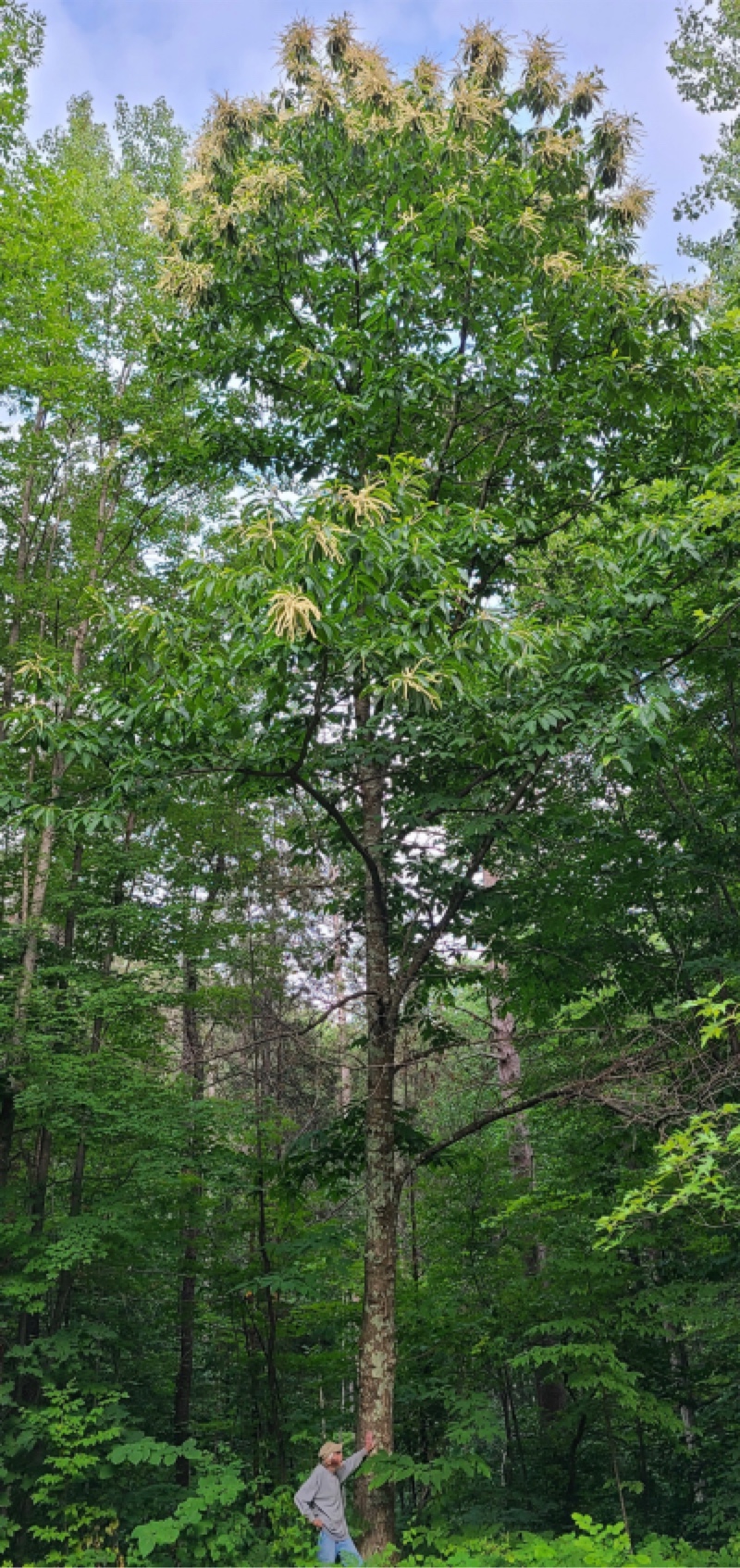|
Mike Heim's Tertiary Rewilding in Northern Wisconsin
Hayward, Wisconsin
Click for Pt. 1 on Florida Torreya and Florida Yew plantings
My name is Michael Heim and I am addicted to growing all kinds of odd and interesting plants outdoors. I'm curious to find out if they can handle our
harsh climatic conditions here in (brrrr!) northern Wisconsin in what used to be USDA Zone 3, but is now Zone 4, although wild swings in the weather do seem to be more common now.
One of my favorite pastimes is attempting the rewilding of plants which
used to grow in northern North America during the Tertiary Period,
but for whatever reason went extinct with the arrival of the Pleistocene,
hanging on in other parts of the world such as Asia.
I've been interested in fossil plant life ever since as a kid my family and I would go on regular Sunday excursions to the strip mines south of Chicago looking for fossils from the long-vanished world of the Coal Age, when Illinois was near the equator and attached to Europe. Many years later I was privileged to go on a university expedition to western North Dakota to collect the remains of a 60 million year old forest. The single layer of deciduous tree leaves, seeds, and twigs had apparently been torn off in a storm and deposited in a pond or lake having abundant cattails.
In attempting to grow their nearest living relatives — e.g. Ginkgo biloba, Taxodium distichum, Cercidiphyllum
japonicum, Pterocarya rhoifolia — I discovered that all were extremely
cold-hardy.
Now, inevitably when one sees reconstructions of prehistoric ecosystems in books, they are portrayed as tropical to subtropical, unless of
course they are of the 'Ice Age'. Never, for instance, have I seen a January landscape of North Dakota, some sixty million years ago. So here then is a topic sorely neglected by paleontologists and paleoecologists: the winter survival of plants and animals in the distant past at temperatures which at times likely fell well below zero F.
As you can tell, I'm particularly interested in prehistoric ecology and environments ...
Part 1 reports on his work with just the focal species of Torreya Guardians (and its rare cousin, Florida yew, which is also limited to the Apalachicola region of n. Florida).
REPORTS IN CHRONOLOGICAL ORDER
2010
Above left: The main planting
location, a mixed forest with acidic sandy loam soil.
Above right: Tertiary winter. This resembles Paleocene fossil slabs that I collected in western North Dakota.
ABOVE LEFT: Eight-foot tall deciduous Taxodium, which I planted, in our front yard. It is now covered in Usnea and other lichens which resemble Spanish-moss.
ABOVE: From "Flora of the southern and mid-Atlantic states, working draft of May 2015", by A.S. Weakley, May 2015, UNC Herbarium, p. 802. 2017
• MARCH 14, 2017 email from Michael Heim:
This past summer my daughter Karen and I took a camping trip to the Red River Gorge area of central Kentucky. My goal was to study the ecology of an upland forest containing Tertiary relict species which have not reached Wisconsin during our post-glacial times. The woods there and in our part of northern Wisconsin are both growing on sandstone bedrock, so the forest composition is a virtually identical white pine/red oak/ red maple/hemlock type. That was startling to see.
What I found even more fascinating were the additional species, including bigleaf magnolia (Magnolia macrophylla) and American holly (Ilex opaca).
Has our postglacial climate precluded them from returning to Wisconsin or could it be that unfavorable edaphic (soil) conditions and/or frequent anthropogenic fires in the intervening regions have stalled their range expansion?
Aiming to find out, I collected cuttings and some small seedlings to trial within the same woodland exclosure back home where Torreya taxifolia and Taxus floridana are growing.
As of now (March 2017), the hollies look perfect, even though it has been an extraordinary winter here. On December 18th the temperature dropped to -25F with only several inches of snowcover. Heavy rainfalls resulted in the unprecedented disappearance of the snowpack in February. Since then the bare ground and uncovered plants have had to endure temperature extremes seesawing back and forth between -5F to almost 60f and back again. The sustained strong damaging winds are also unusual.



My baldcypresses have done very well here in the cold North, with some exceptions. As with the arboretum trees, they vary in hardiness from a single packet of seed. All were uninjured at -40 during February 2021. Some seedlings are now well over my head and can put on twenty inches of growth in a year. These are trees from wild-collected Illinois seed; seedlings from farther south, along with the related pondcypress, have not proven hardy. The seedlings overwinter best if planted out as second-year seedlings and tend not to survive if planted directly in water, but thrive in saturated soil. I have a grove of five trees thriving in a sphagnum bog. This was unexpected, as it is nowhere near the typical river bottom habitat of the species. Two of my thirty-inch tall trees growing in a beaver meadow were completely submerged for a full year after beaver rebuilt their dam. Once the dam was destroyed, the trees continued growing as if nothing had happened. According to the literature, they should have died. As long as they receive plenty of light, baldcypresses are highly adaptable here regarding soil conditions, even thriving on sand if watered during drought. I understand that established trees are quite drought-tolerant. Deer will browse them in winter, but they recover very well the following growing season. My trees turn a beautiful russet-orange color in late October and hard frost in autumn does not injure their foliage. One tree was killed when its bark split off due to dehardening during an early spring heat wave and then freezing again, but the others were fine. As one can tell from these photos that I took when they were young, baldcypresses are beautiful, elegant trees. I encourage you to plant them in our wetlands, not only to minimize the ecological disruption that may be caused by climate change and the emerald ash borer but, looking at the longer view, as rewilding a species which once graced our beautiful Northland and was wiped out by the last great climate change event, the Ice Age.
• December 2022/ Michael Heim / A Wollemia Christmas Tree in Wisconsin (potted, of course)
Like our own glacial relict, Torreya taxifolia, Wollemia is making a last stand in the coolest place it could find: the bottom of deep, nearly inaccessible canyon in southeastern Australia. Sadly, unlike Torreya, there is as yet no citizen or governmental project aiming to "rewild" this remarkable tree into a poleward location (are there any in the southern hemisphere?) where it could thrive over a larger geographic range.
All Wollemia here in the USA in horticultural circulation are rooted branchlets. Mike sets this potted specimen outdoors in the warm seasons, bringing it back inside each winter.
PHOTO RIGHT: Earlier this month, Mike sent Torreya Guardians this photo of an ericad shrub native to the southern Appalachians that he had planted in his Wisconsin forest: Pieris floribunda.
• April 2023/ Michael Heim / "Botanical Beauties of the Alabama Appalachians"
Michael Heim wrote a photo-rich essay about his botanical trip, August 2022, into the southernmost Appalachians of Alabama. It was published in the Spring 2023 issue of Rock Garden Quarterly, a publication of the North American Rock Garden Society. (Click here for a PDF.) An excerpt that shows his Torreya assisted migration action (in Wisconsin) in its broader context):
• July 2023/ Michael Heim / Healthy pure American Chestnuts planted here in 1980 Wisconsin
MIKE HEIM wrote: "Here are photos of my largest blight-resistent pure American chestnut. I had bought them from a nursery in MI. It developed blight cankers early on, healed over them, and hasn't had a problem since."
CONNIE BARLOW NOTES RELEVANCE RE HISTORIC GROVES (29 August 2023): The timing of these photos is very helpful, as I have just finished reading "Beyond blight: Phytophthora root rot under climate change limits populations of reintroduced American chestnut", by Eric J. Gustafson, Brian R. Miranda, Tyler J. Dreaden,
Cornelia C. Pinchot, and Douglass F. Jacobs, in 2022, Ecosphere.
Because Historic Groves documentation by Torreya Guardians far north of the tiny historical range of Torreya taxifolia in n. Florida has been recognized by the U.S. Fish and Wildlife Service as an important contribution of ours in learning recovery parameters for this critically endangered species, I am keen to point out to the USDA researchers who coauthored this 2022 paper that, in addition to computing prospective disease-free latitudes, they should make an effort to document and publish mature plantings of American Chestnuts that are thriving in far-north latitudes, including Mike Heim's site in northern Wisconsin.
• March 2024/ Michael Heim / Photos of southerly plant species that survived the winter
ABOVE L TO R: Xerophyllum asphodeloides; Shortia galacifolia; Pachistima myrsinites with Gaylussacia brachycera; Magnolia macrophylla.
ABOVE & BELOW: Here are most of the surviving hollies I am testing. Each is a different seedling or rooted cutting which I gathered in the wild, after researching the coldest locations in the species' range: the northwestern edge of the Cumberland Plateau in KY, the coldest part of NC (-32F recorded there), and central WV.
ABOVE & BELOW: Pieris floribunda.
ABOVE Leucothoe fontanesiana and BELOW Persea borbonia
• June 2024/ Michael Heim / FLAME AZALEA thriving in Wisconsin
There are many other individuals nearby, which makes the tiger swallowtails very happy.
Hoping for seedlings, which would indicate an established population."
|














































